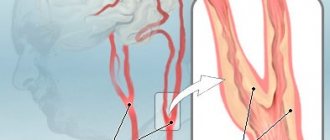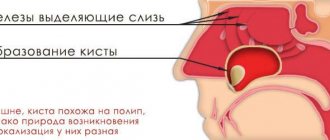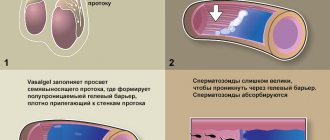Procreation is not yet part of your plans? Then you should think about a reliable contraception. Its purpose is to preserve a woman’s health, prevent unwanted abortion and create favorable conditions for the birth of healthy children.
You should not choose contraceptives on your own! This can harm your health or cause hormonal complications. In such an important matter, it is better to trust professionals - such as the highly qualified gynecologists of the MedicCity clinic. Our attentive doctors, based on a thorough female examination, will select the appropriate contraceptive for you, taking into account the individual characteristics of your body.
1 Consultation with a gynecologist
2 Ultrasound of the pelvic organs
3 Ultrasound of the mammary glands
Benefits of hormonal contraception
Hormonal contraception, when used correctly, provides almost 100% reliability against unplanned pregnancy - on the one hand.
On the other hand, hormonal contraception is reversible. This means that after a woman stops using hormonal contraceptives as a means of protecting against an unplanned pregnancy, her ability to conceive is restored fairly quickly. The results of a number of foreign studies have shown that the incidence of pregnancy after discontinuation of hormonal contraception is approximately:
- 57% - in the first 3 months.
- 86% - after 1 year.
These data are comparable to the general population pregnancy rate in women who do not use contraception at all.
What positive bonuses does hormonal contraception provide in addition to reliable protection against unplanned pregnancy? Some of these positive effects are so significant that they can be considered an optimal solution for the prevention and treatment of a number of gynecological problems.
- Elimination of pain that occurs on the eve of and/or during menstruation.
- Reducing or eliminating pain associated with endometriosis. Prevention of recurrence of endometriosis after surgical treatment.
- Elimination of symptoms of PMS (premenstrual syndrome).
- Reducing blood loss during menstruation. Strictly speaking, the spotting that occurs in a woman taking hormonal contraceptives is not called menstruation, but a menstrual-like reaction. Reducing the amount of blood lost during “menstruation” allows you to quickly and more reliably eliminate the symptoms of iron deficiency and anemia while taking iron supplements.
- Regulation of the number of “menstruation” during the year. When choosing a prolonged regimen of taking hormonal contraceptives, the number of “menstruation” can be reduced to 3-4 per year instead of 12-13. This provides prevention of iron deficiency anemia + increased comfort on business trips, during vacations and holiday events.
- For adherents of the traditional regimen of taking hormonal contraceptives (with monthly bleeding), psychological comfort comes from “cycle regularity.”
- Positive cosmetic effect when taking combined hormonal contraceptives with the so-called antiandrogenic effect (eliminate acne, oily scalp and hair, stop hair loss on the head and reduce the growth of hair shafts on the abdomen, thighs, areolas).
- Relative protection against infections due to the fact that the mucus in the cervix becomes thicker and impenetrable not only for sperm, but also for some bacteria that can cause inflammation.
- Reducing the risk of developing benign breast diseases (fibrocystic mastopathy)
- Reducing the risk of ovarian cancer, uterine cancer and colon cancer.
- Reducing the risk of ectopic pregnancy. No pregnancy, no risk of the pregnancy being ectopic and requiring surgery with its possible risks and long-term effects on fertility.
- Treatment and prevention of functional ovarian cysts and ovarian apoplexy (severe pain syndrome arising due to disturbances in the process of maturation of the dominant follicle, ovulation and formation of the corpus luteum). In some cases, the occurrence of functional ovarian cysts and apoplexy lead to emergency surgery. In addition to the fact that the operation carries some risks associated with the intervention itself and anesthesia, there are also risks of removing part of the ovary, which reduces its reserve (egg supply) and may subsequently negatively affect the ability to conceive.
The regularity of the menstrual cycle is an indicator of women's health. On the other hand, nature initially planned that a woman would have less ovulation and menstruation due to a greater number of pregnancies, childbirths and breastfeeding periods, when most women have suppressed ovulation. Ovulation – the release of an egg from the ovary – is each time accompanied by microtrauma to the ovary. A large number of such microtraumas throughout a woman’s life without natural breaks for several pregnancies and lactation periods increases the risk of developing ovarian cancer. Taking combined hormonal contraceptives with sufficient levels of hormones to suppress ovulation prevents these microtraumas, thereby reducing the risk of developing ovarian cancer. The same mechanism helps prevent painful ovulation and the formation of functional ovarian cysts in women prone to this.
When should an IUD be removed?
The service life of intrauterine gynecological devices ranges from 1 to 7 years. At the request of the woman or after the time of using them has expired, you need to consult a doctor again to have them removed. Removing the spiral on your own is impossible and is fraught with dire consequences.
Before the removal procedure, the woman is examined in the same way as before the insertion of an IUD. The restrictive rules are the same and are followed during the first week after extraction. Changes in the menstrual cycle are noted only if a hormone-containing IUD was used. The cycle should return to normal within six months. Restoration of reproductive function after removal of the IUD occurs within one year. Although you can plan a pregnancy after two months.
What needs to be done to decide on the choice of hormonal contraceptive?
- Visit to the gynecologist. During the interview, the doctor will be able to find out what exactly the woman wants to get from hormonal contraception and suggest the optimal drug for her. The doctor also determines contraindications for taking certain hormonal contraceptives.
- During the visit after the interview, the doctor examines the woman in a chair and takes swabs. First of all, you need a cytology smear from the surface of the cervix and from the cervical canal (the so-called cervical cancer screening, Pap test).
- Ultrasound of the pelvic organs and ultrasound of the mammary glands/mammography in the first phase of the cycle.
Follow-up with a doctor
If a woman feels well, then a follow-up examination by a gynecologist should be done 10-14 days after the insertion of the IUD. If you experience a high or low-grade fever, severe bleeding and pain, or an unpleasant odor from the vagina, you should immediately run to the doctor.
An examination by a gynecologist is also necessary in the following cases:
- if you feel a spiral in the vagina;
- you suspect pregnancy;
- menstruation did not occur within 4-6 weeks;
- pain and bleeding appeared during sexual intercourse.
If the spiral is installed correctly and the procedure has a good outcome, observation by a gynecologist should be carried out as usual (once a year).
Hormonal contraception: methods, means, mechanisms of action
- Tablets are the so-called combined oral contraceptives, COCs. These contraceptives are called combined because each tablet contains 2 types of hormones - estrogen and a progestron analogue (gestagen, progestin). You need to take 1 tablet every day at approximately the same time. COCs are available in different packages: 21 tablets – you take the tablets for 3 weeks + 1 week break for “menstruation”. After 7 days, you need to remember and start taking pills from a new package. This type of COC appeared very first and for many years was the only possible option. For many women, it became a problem to remember the time to take the next pill - once, and the day when you need to start taking pills from a new package - two. The problem is partly solved with the help of various “reminders” (for example, in a mobile phone) and with the release of new forms of COCs, where one package contains 28 tablets (24 with the hormone and 4 “empty”). Regime 28 (24+4) is convenient for women who prefer the traditional regimen of taking COCs with monthly bleeding (“menstruation”).
- Long-term COC regimen. It has become especially popular in recent years. The essence of the prolonged regimen for taking COCs is that hormone-containing tablets are taken daily without a break for menstruation for 3-4 months. Then there is a break for “menstruation”. The prolonged regimen is safe and convenient. Tablets containing only gestagens, the so-called mini-pills. Suitable for women who are breastfeeding and those for whom combined hormonal contraceptives containing estrogen are contraindicated due to the risk of thrombosis.
- The vaginal ring is essentially the same combined hormonal contraceptive containing estrogen and progestogen. It is convenient because the ring is placed in the vagina for 3 weeks. You don't need to remember to take the pill every day. The downside is that some women experience increased vaginal discharge and itching of the vulva.
- The patch is essentially the same combined hormonal contraceptive containing estrogen and progestogen. One strip of patch is glued to a selected area of skin on the body once a week. You don't need to remember to take the pill every day.
- An intrauterine device containing the hormone gestagen (an analogue of progesterone). Installed for 5 years. It has a pronounced therapeutic effect in cases of heavy bleeding during menstruation (when other causes such as submucous uterine fibroids are excluded). A cost-effective contraceptive option.
IUD: put it in and forget it
One of the most popular methods of contraception is intrauterine devices. They are comfortable, do not require distraction before sexual intercourse and do not dull sensations during intimacy.
An IUD is installed for up to 10 years. Some models have a container with hormones that fight genital diseases and thicken mucus to protect against sperm penetration and infections. The two-in-one contraceptive is very reliable.
The effectiveness of the IUD reaches 90%. Where do the 10% of losers come from? These are women who believed in the “almighty infinite power of the spiral.” Having installed an intrauterine device, they do not visit a gynecologist. The spiral moves - the woman becomes pregnant. Some IUD patients don't even remember when their last menstrual period was! This attitude towards one's own health is unacceptable.
Side effects of hormonal contraception
Most side effects while taking hormonal contraceptives are observed in the first 2-3 months of use. These side effects are usually mild. They should be “endured” and taking hormonal contraceptives will go “like clockwork”. Let's touch on some of the most common side effects.
Increased body weight
In the first months, while taking hormonal contraceptives, appetite may increase and some fluid retention may occur in the body. Some modern contraceptives contain a progestin component, which can have a mild diuretic effect and reduce appetite.
Acne
A number of modern hormonal contraceptives, due to their gestagenic component, reduce acne. If acne appears while taking hormonal contraceptives, you should think about other causes of the rash (for example, the development of demodicosis, improper selection or use of new cosmetic skin care products).
Intermenstrual bleeding.
May be in the first 2-3 months. Taking hormonal contraceptives. They are more common when using contraceptives based on gestagens (mini-pills, hormone-containing intrauterine device) or containing very low doses of hormones. Does not indicate a health problem. If such discharge continues to persist for more than 2-3 months, it is worth discussing this problem with a gynecologist. It may be worth trying a different contraceptive with a different level of hormones.
It happens that intermenstrual bleeding appears several months after starting to take COCs. This may be due to the fact that during long-term use of COCs, the endometrium (uterine lining) becomes very thin. If intermenstrual bleeding appears a few months after starting to take COCs, you should consult a gynecologist and have an ultrasound of the pelvic organs done in order to exclude other causes of unscheduled bleeding from the genital tract. After this, the doctor may suggest switching to another hormonal contraceptive drug.
With prolonged use of COCs, menstruation “disappears”.
As a rule, this is also associated with thinning of the endometrium (uterine mucosa). You need to see a gynecologist. Most likely, your doctor will recommend switching to hormonal contraceptives with a slightly higher hormone content.
Headache
For most women, headaches that arise or worsen in the first month of taking hormonal contraceptives go away on their own within the next 2 months of taking them. Headaches should not be considered as the main reason for refusing to continue using hormonal contraception.
Migraine headaches may become more frequent/intensified, remain unchanged, or decrease while taking hormonal contraceptives. When deciding whether to take hormonal contraception in a woman suffering from migraine, it is important to take into account the presence of an aura or focal brain symptoms during an attack, as well as the presence of additional risk factors for stroke.
Life in the first time after insertion of the IUD
Immediately after placing the contraceptive, the following side effects may occur and should go away on their own:
- cramping pain in the lower abdomen (only the first two days);
- spotting spotting (first two weeks);
- heavier menstrual flow (first two to three months);
- swelling of the mammary glands and acne (caused by hormonal IUDs).
- During the first ten days after installation of the spiral, the following rules must be observed:
- refuse sex;
- do not use sanitary tampons;
- do not douche;
- do not take a bath (it is also prohibited to visit the pool and sauna);
- Do not perform heavy physical work.
- For severe nagging pain, you can put a suppository with indomethacin or take a No-shpa tablet.
Contraindications to hormonal contraception
- Woman's age. Age over 35 years increases the risk of thrombosis. This factor becomes especially important in the presence of additional risk factors for thrombosis, such as: smoking, obesity, frequent long-term flights, and a hereditary predisposition to thrombosis.
- Smoking
- Obesity
- Presence of arterial hypertension (increased blood pressure)
- Hereditary predisposition to thrombosis (cases of heart attacks, strokes, thrombosis and thromboembolism in close relatives at a relatively young age - up to 50 years).
- Liver diseases (cholelithiasis, cholestasis of pregnancy)
- History of complicated pregnancy (abnormalities in liver function during pregnancy; placental abruption, development of preeclampsia/preeclampsia: increased blood pressure, edema, abnormal urine tests)
Sterilization
Surgical methods of contraception are used in both sexes. In women, tubal clipping or ligation is performed, which prevents the egg from entering the uterus. In men, the vas deferens is crossed, but sperm do not enter the ejaculate. This is the most effective method of contraception, the Pearl index is 0-0.2. The occurrence of pregnancy may be associated with the restoration of patency of the fallopian tubes. This is an irreversible method, so the patient is carefully explained that he will not be able to have children. Restoring tubal patency is a complex and ineffective operation, and the only way to give birth to a child remains in vitro fertilization.
If the patient has medical contraindications for having children (severe genetic disease, severe extragenital pathology in women), then, according to his application, sterilization can be performed at any age. If there are no such contraindications, then the surgical method is used when the patient reaches the age of 35 years or if he has at least 2 children.
Typically this operation is performed laparoscopically and takes 10-20 minutes. In addition, tubal ligation can be performed during a cesarean section or abdominal surgery for another reason, but only with the written request of the patient.










